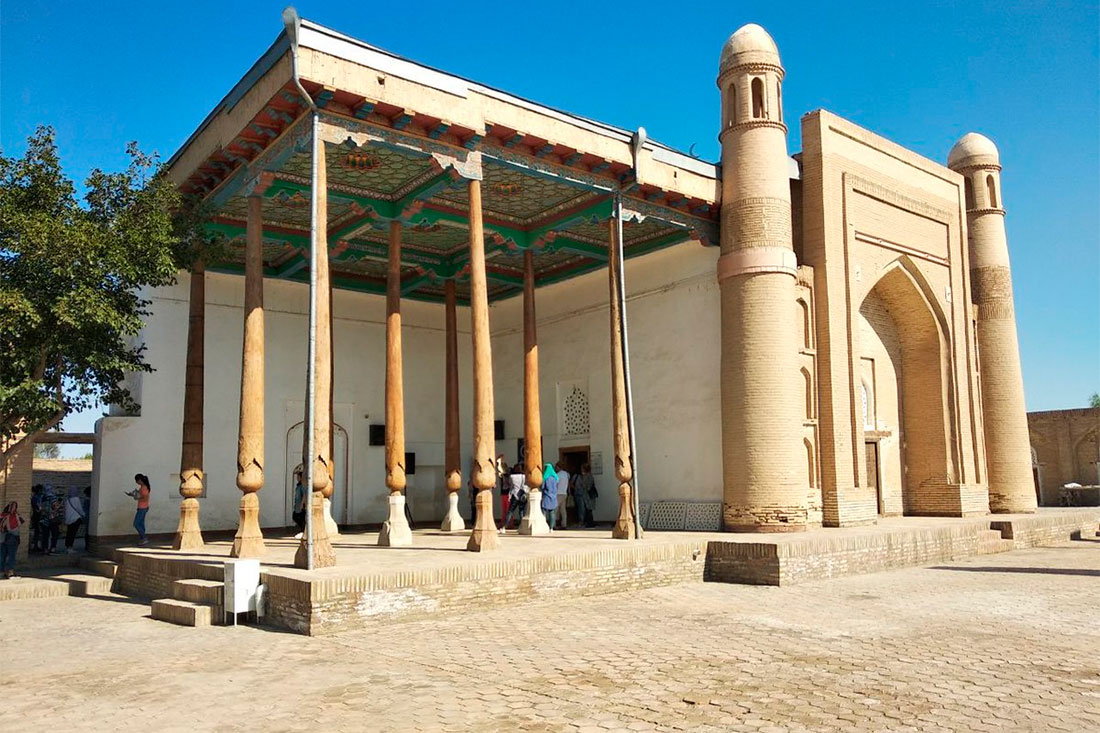Kiz-Bibi Women's Sufi Monastery
One of the trends of Islam, Sufism— became widespread in Central Asia as early as the beginning of the 13th century. This is a teaching based on classical Muslim philosophy. It preaches asceticism and heightened spirituality.
Today, there are several Sufi shrines on the territory of Uzbekistan — most of them are located in Bukhara and its surroundings. The seven tombs where Sufi masters are buried are the most revered: Abdul Abd Al—Khaliq Gijduvani, Khoja Muhammad Orif Ar Revgari, Khoja Mahmud Anjir Fagnavi, Khoja Ali Rometaniy (Khoja Azizon), Khoja Muhammad Boboyi Samosi, Khoja Said Mir Kulol, Baha-ad-Din Naqshband. Whole complexes have been erected next to their tombs, where pilgrims from all over the world come, because miracles of healing are attributed to these places.
Sufi masters are mostly men, but history also knows of rare cases where women have become Sufis. One of them was Mastura khanum, also known as Kiz-Bibi. The Sufi monastery that bears her name was built in the 18th century by order of the vizier Mir-Arab Sadikhon in memory of the saint. The amazing ensemble under the beautiful name of Kiz-Bibi is located between the oasis and the sands of the desert, which was once the bed of the Zaravshan River. It is believed that during the period of the monastery's creation, this area was densely populated. Over the years, the desert sands took over the territory and today there are no settlements near the shrine.
History of appearance
There are many legends about the fate of Mastura khanum, of which there are two main ones. According to the first one, she was an ordinary Sufi girl and one day she simply disappeared into the monastery's numerous hujras. Folk legends say that since then her soul still dwells in this monastery, protects it and helps all the inhabitants. Pilgrims tell stories about seeing the ghost of Kiz-Bibi in the monastery walls.
Other legends tell the story that the girl had to flee to the desert to avoid marrying an unloved man. For a long time, Mastura khanum lived as a hermit until higher powers sent her the gift of healing people. She devoted the rest of her earthly life to treating people.
Today, many pilgrims from all over the world come to this holy monastery to be cured of infertility and women's diseases. It is believed that for this it is necessary to spend exactly 3 days in the monastery, strictly observing fasting, solitude in a cell and continuous prayer.
Males are still strictly prohibited from entering the Kiz-Bibi monastery.
Architectural features of the monastery
The ensemble, named after Kiz-Bibi, consists of three different courtyards. The first one is an economic one and is intended for employees of the monastery who monitor cleanliness and order. The second courtyard belongs exclusively to the novices of the monastery, and the third one serves to accommodate pilgrims.
The architectural complex is built in such a way that Sufis and pilgrims are completely hidden from the outside world, all the necessary buildings are united by an inner courtyard. On the territory of the monastery there is its main shrine — mazar (this is the tomb of Kiz-Bibi herself), a mosque-khanaka, an underground cell — chillya khan - designed for solitary prayers and long fasting, cells for pilgrims — hujras, as well as outbuildings — baths, kitchens, etc. There are also special rooms that are designed for mentally ill novices. The entrance to the women's khanaka (darvazakhana) is located on the southern part of the complex.
The monastery was built gradually, and the necessary buildings and facilities were added year after year. The ensemble was finally formed by the end of the 18th century and has managed to survive to our time in its original form.

















